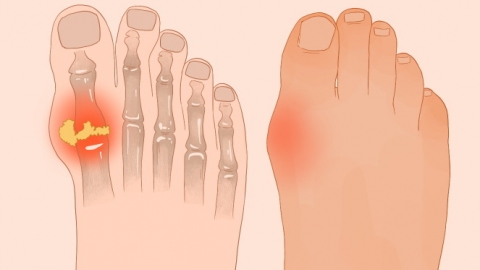What are the symptoms of high uric acid?
Generally, as a manifestation of metabolic abnormalities, high uric acid levels mainly present symptoms including joint pain, joint swelling, restricted joint movement, redness of the joint, and abnormal urine. A detailed analysis is as follows:

1. Joint Pain: In the early stages of elevated uric acid levels, joint pain frequently occurs. This pain is typically sudden and severe, commonly affecting the big toe joint but may also appear in areas such as the ankle and knee. The pain may intensify at night or early in the morning, feeling like sharp cutting pain, which is difficult to endure and can affect normal rest and walking.
2. Joint Swelling: The affected joint may swell due to the deposition of urate crystals within the joint, which causes an inflammatory response. The swollen joint appears full and feels warm to the touch, with increased tenderness upon pressure. The degree of swelling varies depending on the severity of the inflammation.
3. Restricted Joint Movement: Affected by joint pain and swelling, the movement of the corresponding joint may be restricted, manifesting as an inability to bend or extend the joint freely, or even difficulty bearing body weight. For example, when the big toe joint is affected, walking becomes very difficult, significantly impacting the ability to go up and down stairs.
4. Redness of the Joint: Joint inflammation caused by high uric acid levels results in redness of the skin around the joint, which is a sign of local vasodilation and congestion. The redness generally corresponds to the area of joint swelling, visibly distinguishable from surrounding normal skin. This redness gradually subsides as the inflammation resolves.
5. Abnormal Urine: High uric acid levels may affect the condition of urine, causing darkened urine color, such as deep yellow or even tea-like coloration. Some individuals may also experience increased foaming in the urine, which occurs due to the impact of uric acid excretion on the urinary system, altering the composition of urine.
In daily life, it is advisable to reduce intake of high-purine foods, such as organ meats, seafood, and beer, and to drink more plain water to promote uric acid excretion. Maintaining regular physical activity and controlling body weight within a reasonable range are also beneficial for maintaining stable uric acid levels.





